Bathed in the red lights of a bygone era, Miss Lovely shines as a Hindi answer to Boogie Nights with more than a few nods to film noir. The figures that color this world are just as intriguing as the Dario Argento-esque lighting and the aged film techniques used to set the movie’s date. Stripped of the usual Bollywood romanticism & song-and-dance numbers, the story moves much faster at Miss Lovely’s manic go-go pace, so pay close attention.
Jealousy, love, lust, and paranoia drive the story of struggling porn peddler Vicky (Anil George) and his withdrawn brother Sonu (Nawazuddin Siddiqui). Financed by gangs and breaking Indian morality laws, Vicky makes the movies and finds actresses willing to appear in “C-films,” the classification given to porn and horror movies. Sonu plays the part of the on-set gofer, the guy getting actresses booze or teas for the crew. The dynamics between the two are challenged when Sonu falls for a girl named Pinky (Niharika Singh), a mysterious figure who disapproves of their role in the porn industry. Sonu insists he wants to make good and work on his own film, Miss Lovely. Against Vicky’s advice, Sonu continues the relationship.
The saga of Vicky and Sonu are positioned like the ancient Roman tale of Romulus and Remus. The two are wholly different personalities, with Vicky dominating Sonu for much of the movie. Sonu’s love for Pinky fuels his artistic ambition and inspires him to seek independence while Vicky’s sleazy wannabe easily dominates the soft-spoken Sonu onscreen. Thanks to Anil George’s impressive commitment to his character, Vicky, he portrays the amoral dirtbag with such finesse; it’s hard not to root for him.
Sonu chimes in from time to time to lend his thoughts to certain scenes, but it’s not consistent enough to become overbearing. Take it as another hat tip to the old-school film noir, just like the character of Pinky, an unassuming name for the film’s femme fatale. Their relationship is understated, so much so that when a twist hits, you hardly expect it. Several other characters come in and out, but it’s not an ensemble piece as much as Boogie Night is. No, its charm is that it captures the underbelly of this forbidden trade and humanizes the characters to the point that even an idealistic love story can develop.
Like the moral policing of the Regan era, India went through its own anti-pornography era in the ‘80s. Director Ashim Ahluwalia explains in the press notes that Miss Lovely was born out of the ashes of a scrapped documentary on India’s underground porn industry. Many of his subjects asked not to be shown committing illegal acts (pornography is still illegal in India), so Ahluwalia shelved the fragmented doc until he co-wrote his first narrative feature, Miss Lovely. The camerawork from his previous movie, a documentary on India’s call centers, shows up in Miss Lovely in careful handheld. Many of the older camera movements of C-films are cribbed to replicate the authenticity, but also provide some comic relief in close-ups or overhead shots. Though the movie skirts some of the more exploitative practices of the porn business, it is far from idealistic, going so far as portraying the poverty on both sides of the camera.
The luscious Miss Lovely kicks off with a synth-heavy roar, and its soundtrack fits perfectly as bursts of 80s pop music interrupt the plot’s seriousness. In one sequence, Vicky stares Pinky down, predatorily. She attempts to escape, but he corners her outside the club’s near silent hallway. The camera cuts back to Sonu, standing on the dance floor with two drinks and over-cheery spastic music blaring behind him. The exact year when events take place is never really discussed, rather left to its vaguely 80s look to tell you that.
This is just fine when you can get lost in the lava lamp-like lights that swim across the screen. Lights are incredibly important for this film, not only because it sets the mood for the story (Woody Allen changing the light bulb to glow red in Annie Hall comes to mind), but it also displays Ahluwalia’s technique as a visionary artist. In one moment in the club, action, fog lamps, and lights are slowed to create the impression of a Holi celebration, a Hindu holiday that involves the throwing of brightly colored dust and water. The film seems dipped in these oversaturated hues, capturing both the allure of era, but also its hollow comfort when the lights dim and the cops are at your door. Much of this old-school colorful look owes itself to Ahluwalia’s decision to shoot on 35mm and Super 16mm.
Devious and delightful, Miss Lovely already demands a second viewing to notice something new. It’s layered visuals are on par with the impressive cast. Ahluwalia’s storytelling is both familiar and original, drawing from various influences but also creating a look all his own. The setting, the music, the cinematography blends together to recreate the past and capture an essence of mystery. For the price of a cheap pleasure like a movie, Miss Lovely is worth every penny.

















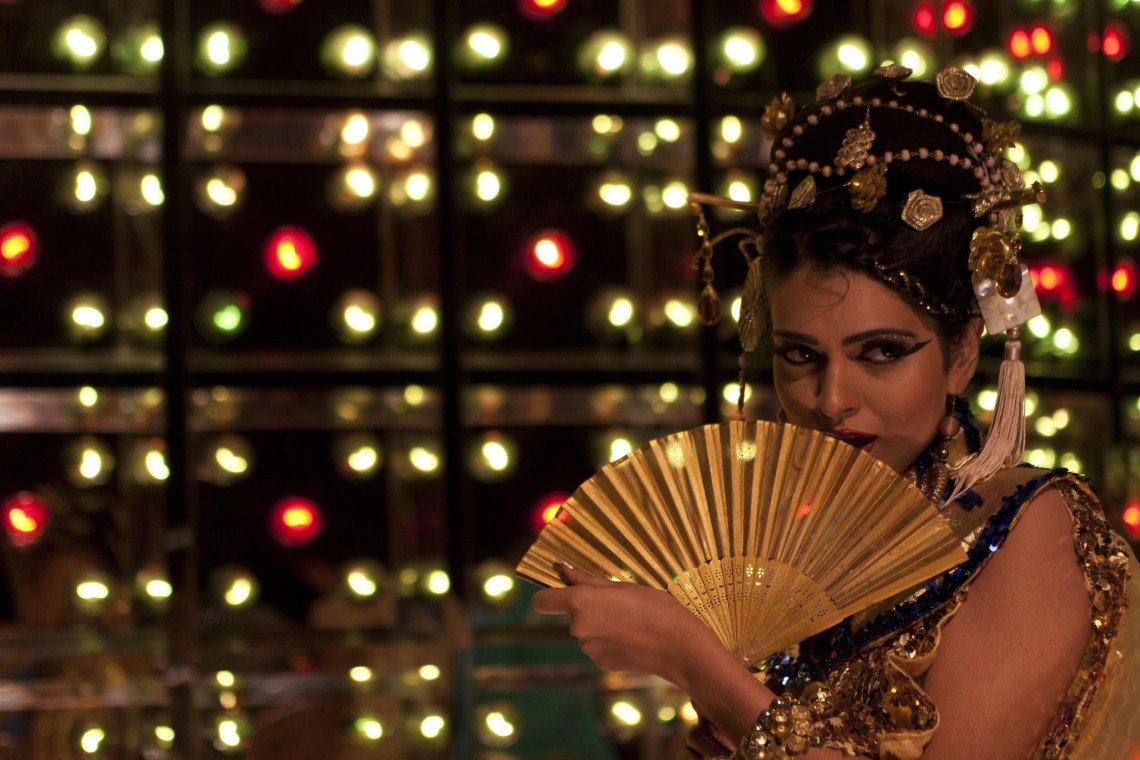
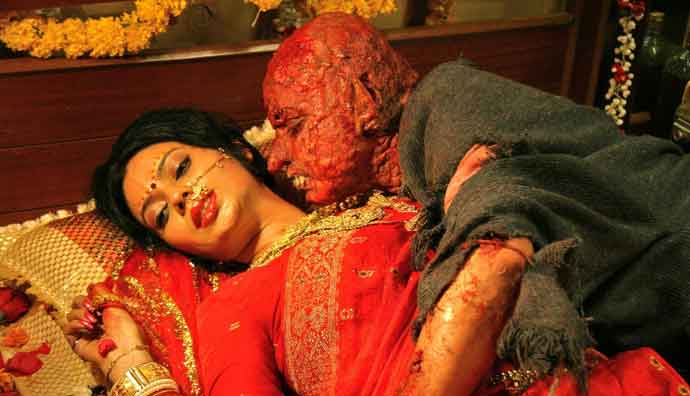
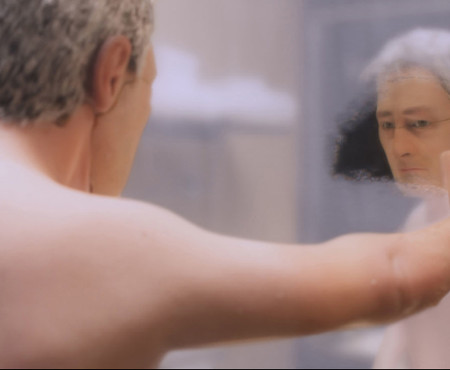
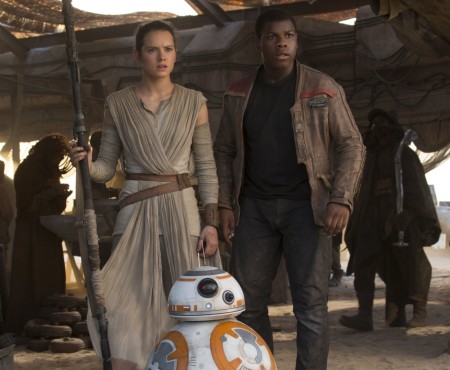
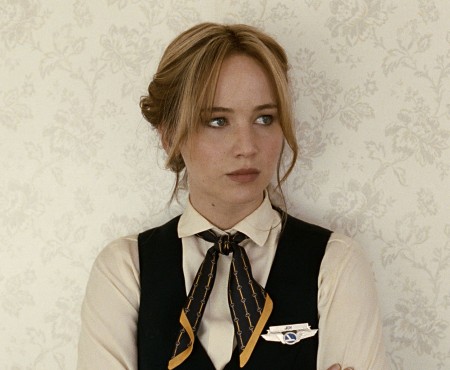
One thought on “Don’t Call “Miss Lovely” a Bollywood Movie”
I really want to check this out. Even the less positive reviews I’ve read all mention how great the cinematography is. If nothing else, it sounds like a feast for the eyes.